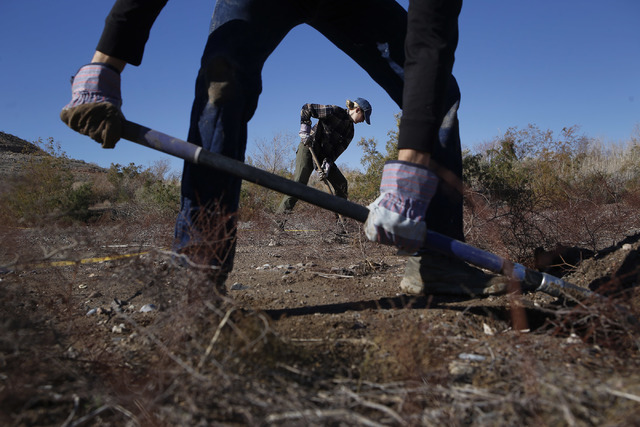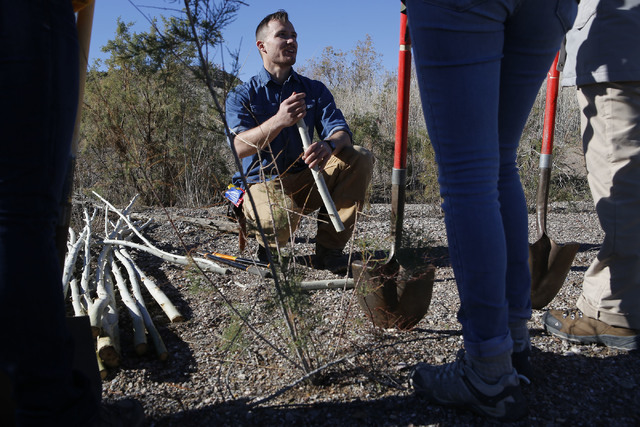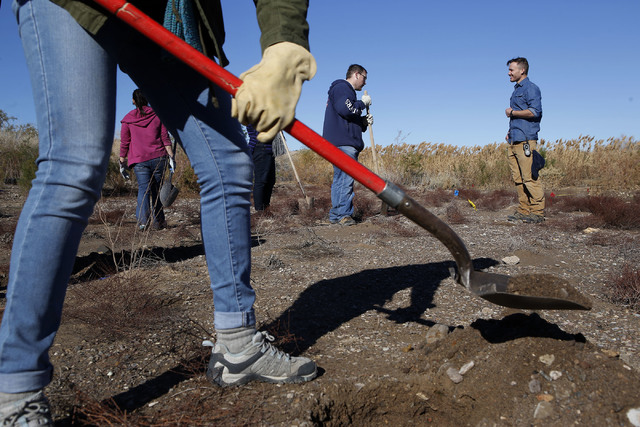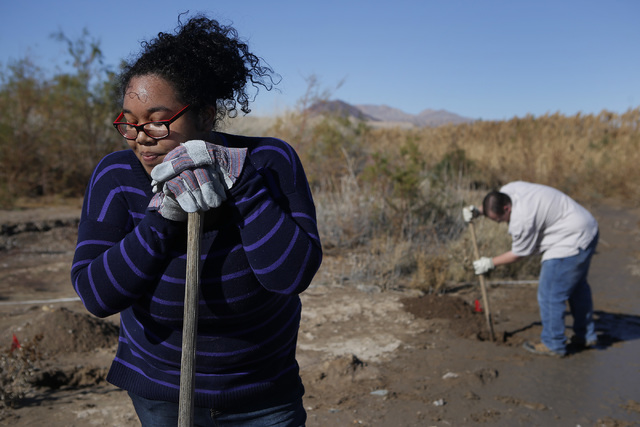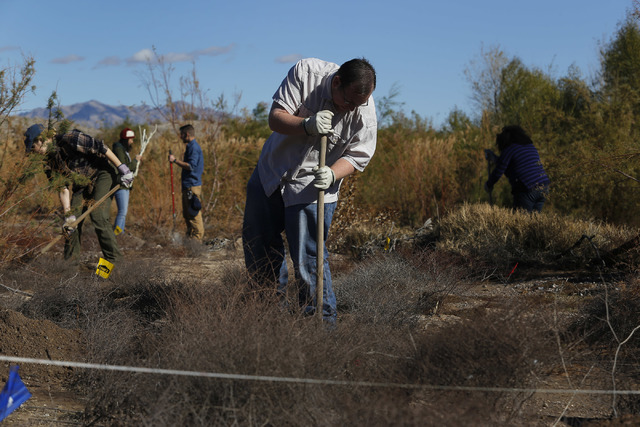Receding Lake Mead creates ideal classroom for UNLV biology students
Receding water levels at Lake Mead have exposed 60,000 acres of land, creating a petri dish the size of Denver for UNLV biology students and others to study how to restore wildlife habitat.
Students Matthew Rader and Vivian Sam were joined by 10 volunteers for eight hours on a recent Saturday morning in an effort to bring life to 4 acres affected by the receding water.
Armed with shovels, the group turned enough dirt to plant 630 trees and grasses along the Las Vegas Wash, an area that was once submerged and served as a docking area for boats.
“This area was 50 feet below Lake Mead,” said Dr. Scott Abella, assistant professor in the School of Life Sciences at UNLV.
“And with the drought and all the water issues, it’s exposed now and probably will be for the foreseeable future. It’s really alarming from a water storage standpoint, but from a land habitat standpoint, I’m thrilled. Nothing can be better for wildlife and the native ecosystem than having this happen.”
Under Abella’s direction, Rader and Sam led the effort to establish native plants for wildlife habitat and watershed protection on the now-exposed shoreline. Their 4-acre classroom represented a tiny corner of the exposed 60,000 acres — equal to the size of Denver, according to Abella — but the experience will likely yield sizeable benefits for years to come.
“Birds, amphibians and reptiles, hopefully all kinds of stuff will show up to the new habitat,” Abella said.
The planting party was a collaborative effort between the National Park Service, the Nevada Naturalist adult environmental education program and the California Fire Science Consortium.
“You can take something that would seem negative, the receding level of Lake Mead, and make it positive,” Rader said. “Create new wildlife habitat in this area that could otherwise be left barren.”
Rader and Sam will continue to monitor the area throughout the spring to see which animals are using the area and to observe the survival of the plants.
“It’s important to get the community out and understanding why this kind of restoration is important to do so they can continue to do it here and other areas as well,” Sam said.
Contact Natalie Bruzda at nbruzda@reviewjournal.com or 702-477-3897. Follow @NatalieBruzda on Twitter.



